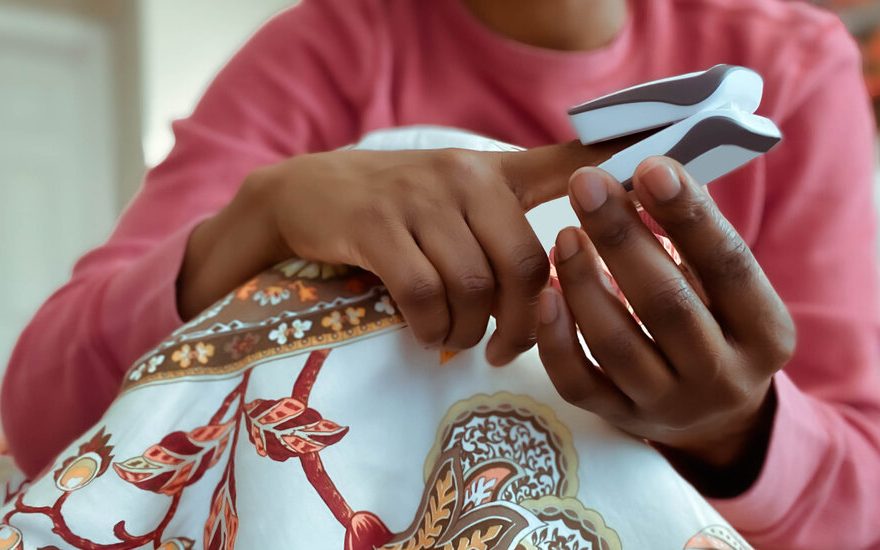Home pulse oximeters have been the personal tech gadget of 2020 and a reassuring way for patients to monitor their health at home during Covid-19.
But a new study found that even in a hospital setting, pulse oximetry devices can sometimes be inaccurate, particularly in Black patients. The finding has raised questions about whether people with darker skin should rely on home monitoring.
Doctors say the devices, which measure oxygen levels in the blood, are still extremely useful for spotting declining health in all Covid-19 patients, including those with darker skin, before they become severely ill. When the device is wrong, the reading is likely to be off by only a few percentage points. What’s important is that all patients, particularly those with darker skin, pay attention to any downward trend in oxygen readings, rather than fixating on a particular number.
“I think having information from a pulse oximeter is better than not having any information,” said Dr. Michael W. Sjoding, an assistant professor of internal medicine at the University of Michigan Medical School and lead author of the new report, which appeared in the New England Journal of Medicine. “I would also say that you have to appreciate that a pulse oximeter is an imperfect device.”
A pulse oximeter looks sort of like a chip clip. When you insert your finger into a pulse oximeter, it beams different wavelengths of light through your skin. The amount of light that is absorbed is a reflection of how much oxygen is in your blood. It’s long been known that dark fingernail polish, cold skin and darker skin pigment can throw the reading off. However the new study suggests the problem occurs in Black patients more often than most doctors thought.
The analysis, which was based on 1,333 white patients and 276 Black patients hospitalized at the University of Michigan earlier this year, used a hospital-based pulse oximeter and compared it to the gold-standard test for measuring oxygen saturation, called an arterial blood gas test. The study found that pulse oximetry overestimated oxygen levels 3.6 percent of the time in white patients, but got it wrong nearly 12 percent of the time in Black patients. Usually the pulse oximetry reading was overstated by a few percentage points.
Latest Updates
Researchers suspect that the inaccurate readings may be occurring because of the way the light is absorbed by darker skin pigments.
A normal reading on a pulse oximeter typically ranges from 96 to 100. Because patients with Covid-19 can quietly develop low oxygen levels without realizing it, patients are advised to monitor their oxygen levels at home. If the oxygen reading dips to 93 or 92, patients are advised to check in with their doctor. But if, as the Michigan study suggested, a pulse oximeter sometimes overstates the oxygen saturation level, the worry is that a patient with dark skin who is self-monitoring at home might delay getting care if the monitor incorrectly reads 94 or 95, when the patient’s actual oxygen level might be 92 or 93.
The solution, Dr. Sjoding said, is for patients to know their baseline reading on the home device and to pay attention to downward trends. If you’re sick at home with Covid-19 and the reading drops by four points or more, that’s a good reason to call your doctor.
While it’s important to seek care, you don’t need to panic. An oxygen saturation level in the low 90s is a concern for people with Covid-19, but it can be treated with supportive oxygen, being placed on your stomach to increase oxygen flow to your lungs and possibly other therapies.
“I would say if you happen to have a pulse oximeter at home, make sure you know what your normal level is, so you can know what a change is for you,” Dr. Sjoding said. “If your home pulse oximeter was reading 98 when you bought it and you were healthy, and now you’re 94 and you’re feeling unwell, that’s a pretty strong sign you’re sick, and you should be seen by a medical professional.”
While the study focused on a group of patients who self-reported as African-American, it’s reasonable to think that the risk of error would be similar in other patients with darker skin color. The findings are of particular concern given that the pandemic is taking a disproportionate toll on Black and Hispanic Americans, and studies have found that African-Americans have been hospitalized at higher rates, suggesting delays in access to medical care.
While the new data on pulse oximeter accuracy are important to help doctors better interpret oxygen readings in patients of color, Dr. Sjoding noted that the findings should not scare consumers away from using the devices at home, as long as they are aware of the limits of the information a pulse oximeter provides.
“My study is more about the emergency department doctor who has to make a decision about whether to admit a patient to the hospital or move a patient to intensive care,” Dr. Sjoding said. “For people at home, the pulse oximeter is still a device worth having, and there’s still information that is valuable.”
Do you have a health question? Ask Well
Source: Read Full Article
